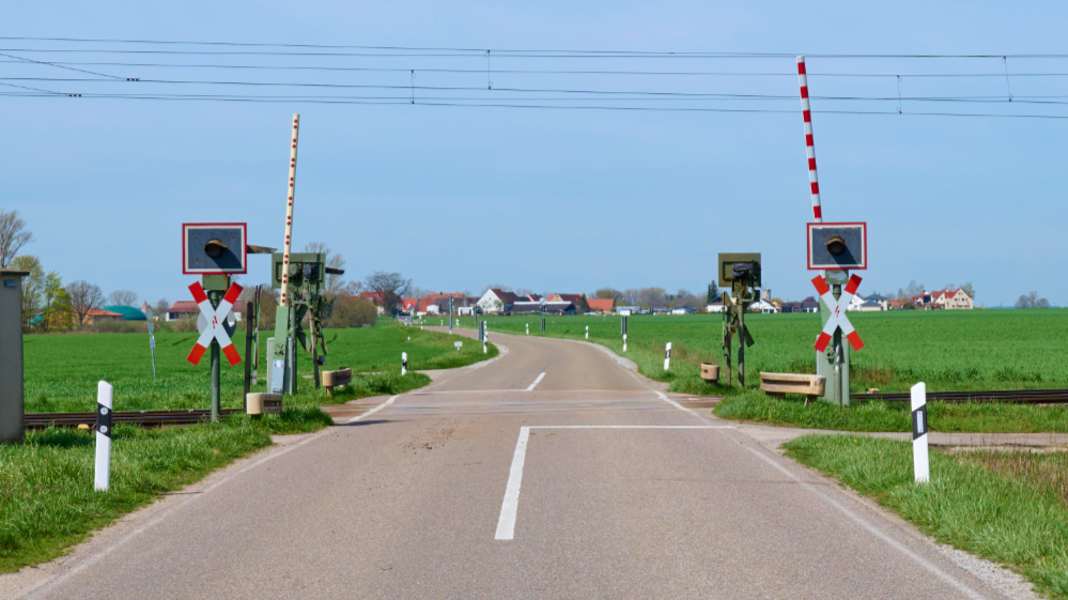
A man suffered a serious electric shock while transporting his sailing boat at a railway crossing in Allensbach on Lake Constance. The incident occurred late on Tuesday afternoon when the sailor was transporting his boat with the mast erected on a handcart. The mast came into contact with the railway overhead line, according to a police spokesperson in Constance.
A rescue helicopter took the seriously injured man to hospital. The accident caused considerable disruption to rail traffic between Radolfzell and Constance. Train services had to be temporarily suspended on the line.
Danger from overhead lines often underestimated
The incident illustrates the often underestimated danger posed by overhead lines at level crossings. The railway lines and other cables carry 15,000 volts of electricity and much more. If they are crossed by boats with upright masts at level crossings, for example, electric shocks can occur, even without direct contact.
The Constance police point out that the mere proximity to overhead lines can be life-threatening. Even falling below the minimum distance of 1.50 to 2.00 metres can lead to flashovers, which usually result in fatal injuries.
Special caution required on Lake Constance
There are several railway crossings near the lake, particularly on the lower part of Lake Constance between Constance and Radolfzell. Especially in summer, many sailors pull their boats over the crossings to the lakeshore. Smaller sailing boats come dangerously close to the overhead lines when their masts are raised, which can lead to arcing.
The federal police therefore display banners at various danger spots warning of the live power lines and appealing to sailors to be careful.
Similar incidents in the past
The accident in Allensbach is one in a series of similar incidents. At the end of July last year, a 23-year-old woman in Ermatingen was seriously injured by an electric shock when the mast of her sailing boat collided with the overhead line at a railway crossing. In June 2024, a 65-year-old man suffered a serious electrical accident on Lake Rottach near Sulzberg when the mast of his catamaran became entangled in high-current lines.
Also interesting:
In 2022, a 65-year-old man came too close to an overhead line with his boat mast at a car park in Waldschach, municipality of St. Nikolai im Sausal. He had the forestay in his hand. He suffered an electric shock and was briefly unconscious, later hospitalised with cardiac arrhythmia and so-called electric shock marks - burns on his left hand and both feet. And in 2021, a 58-year-old man in Allensbach was seriously injured by an electric shock while transporting his sailing boat over a railway crossing. The man's clothes caught fire. He suffered severe burns to his body.
Even on the water, you are not safe from danger. In some places, high-voltage power lines cross lakes, canals or rivers. The cables usually hang high enough. But not always. In 2012, for example, a tragic accident occurred in the Niegripper See water sports area. The crew of a sailing boat came too close to an overhead power line hanging around ten metres below them during a trip. An electric arc from the 110,000-volt line struck the nine-metre-high aluminium mast. The 42-year-old owner was struck and suffered a cardiac arrest; resuscitation attempts by the crew were unsuccessful.
Safety instructions for sailors
Extreme caution is required to avoid such accidents. When positioning the mast, sailors should always make sure that there are no power lines in the vicinity. Even a distance of a few metres can be too short. When trailering boats by hand, the route to be travelled should be walked beforehand or a person should be sent ahead of the trailer. If there is any doubt as to whether it is possible to pass under an overhead line with a standing mast, it is better to lay the mast down.

